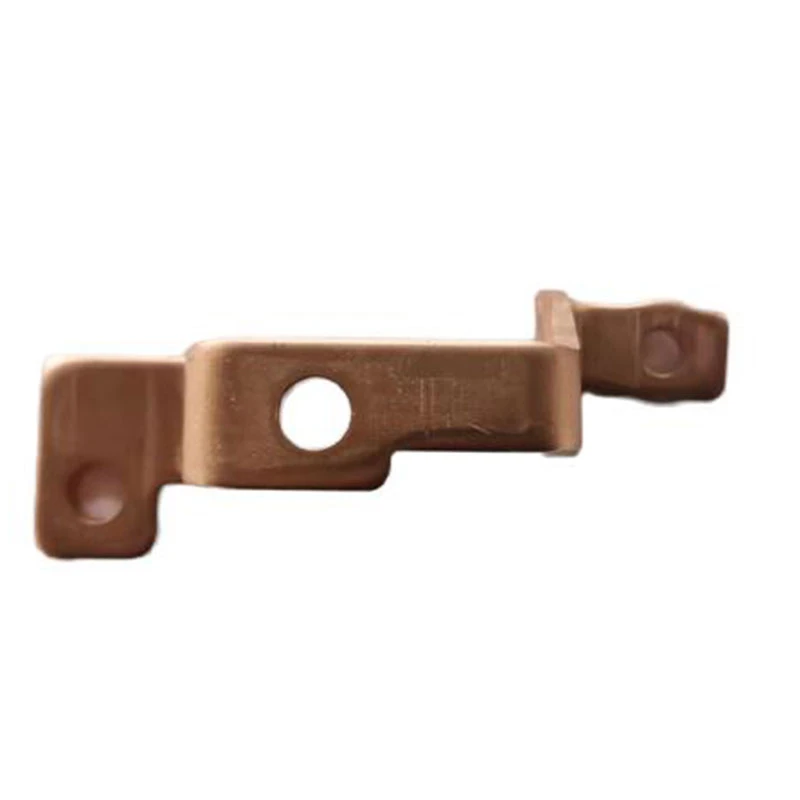Stamping Techniques for Durable Metal Components in Manufacturing Processes
The Importance of Metal Parts Stamping in Modern Manufacturing
Metal parts stamping is a fundamental process in the realm of manufacturing, particularly in industries that require precision and efficiency. This method involves the use of specialized dies and presses to shape metal sheets into specific forms. As technology advances, the significance of metal stamping continues to grow, impacting everything from automotive production to consumer electronics.
Understanding Metal Stamping
At its core, metal stamping is a manufacturing process that transforms flat metal sheets into specific, pre-defined shapes. The process involves several steps, including blanking, punching, bending, and forming. Each step is executed using a combination of hydraulic or mechanical presses, along with intricate dies that provide the necessary design and precision.
One of the primary advantages of metal stamping is its ability to produce a high volume of parts with consistent quality. Once a die is made, it can produce thousands of identical pieces without significant variation. This repeatability is crucial in industries where precision is paramount, such as aerospace and automotive manufacturing. The ability to maintain tight tolerances allows manufacturers to create complex components that fit together perfectly, ensuring the overall integrity of the product.
Applications Across Industries
Metal parts stamping is utilized across a wide array of industries. In the automotive sector, for example, it is used to fabricate components such as brackets, frames, and body panels. These parts are essential for vehicle assembly, contributing to both the structural function and aesthetic appeal of automobiles. The increasing demand for lightweight vehicular designs has also led to innovations in stamping techniques, allowing manufacturers to produce thinner yet stronger components.
In the electronics industry, metal stamping plays a vital role in creating parts for devices such as smartphones, computers, and home appliances. Connectors, enclosures, and heat sinks made through metal stamping are essential for the functionality and durability of electronic products. As technology evolves, the need for more intricate designs in smaller packages has sparked interest in advanced stamping techniques, such as progressive stamping, which allows for multi-step operations in a single press cycle.
Benefits of Metal Parts Stamping
Metal stamping offers several key benefits that make it a preferred manufacturing choice
metal parts stamping

1. Cost Efficiency Once the initial costs of developing a die are covered, producing each part becomes relatively inexpensive, especially when mass production is required. The economies of scale can significantly reduce the overall cost per unit.
2. Precision and Consistency Metal stamping provides a high degree of accuracy, allowing manufacturers to produce components that are nearly identical. This consistency is vital for industries that require high-quality standards.
3. Material Utilization Stamping maximizes material usage, resulting in minimal waste. Sheet metal is cut into desired shapes with little excess material, contributing to cost savings and environmental sustainability.
4. Speed of Production The stamping process can be incredibly fast, often producing hundreds or thousands of parts in a matter of hours. This rapid production capability enables manufacturers to meet high demand and reduce lead times.
5. Versatility Metal stamping can be used with various materials, including steel, aluminum, brass, and more. This versatility allows manufacturers to select the most appropriate material for specific applications, catering to varying strength, weight, and corrosion resistance requirements.
Future Trends in Metal Stamping
As industries evolve, so does the technology surrounding metal stamping. Automation and robotic integration are becoming increasingly common, enhancing the efficiency and accuracy of the stamping process. Additionally, advancements in materials science are opening new possibilities for lightweight and high-strength metals that can be utilized in stamping.
Moreover, the push for sustainability is driving innovations in metal stamping, with many manufacturers seeking ways to reduce waste and energy consumption during production. Techniques such as fine blanking and the use of recycled materials are gaining traction, aligning with global sustainability goals.
Conclusion
In conclusion, metal parts stamping is a critical component of modern manufacturing, offering precision, efficiency, and cost-effectiveness. Its applications across various industries highlight its versatility and importance. As technology continues to advance, the potential for metal stamping will only expand, reinforcing its role as a cornerstone of contemporary production processes. The future of metal stamping looks promising, with innovations poised to enhance its capabilities and sustainability further, ensuring it remains an essential practice in manufacturing.
-
OEM Sand Cast Pump Valve Fittings - Baoding Hairun Machinery And Equipment Trading Co., Ltd.NewsAug.01,2025
-
Custom OEM Impellers | High Efficiency & PrecisionNewsAug.01,2025
-
OEM Sand Cast Pump Valve Fittings - Baoding Hairun Machinery | Customization, Quality AssuranceNewsAug.01,2025
-
OEM Sand Cast Pump Valve Fittings - Baoding Hairun Machinery And Equipment Trading Co., Ltd.NewsAug.01,2025
-
OEM Sand Cast Pump Valve Fittings - Baoding Hairun Machinery And Equipment Trading Co., Ltd.NewsJul.31,2025
-
OEM Sand Cast Pump Valve Fittings - Baoding Hairun | Precision Engineering, CustomizableNewsJul.30,2025















